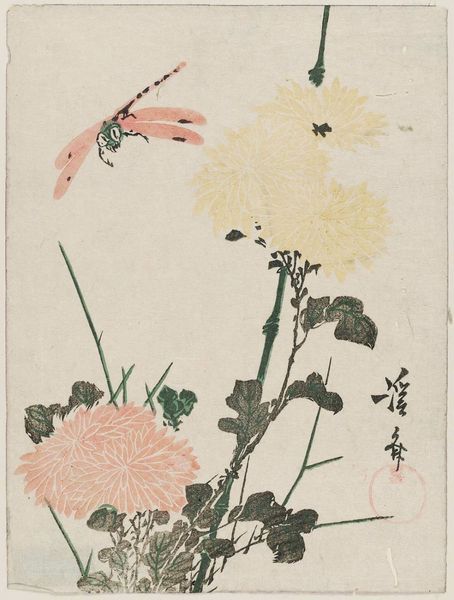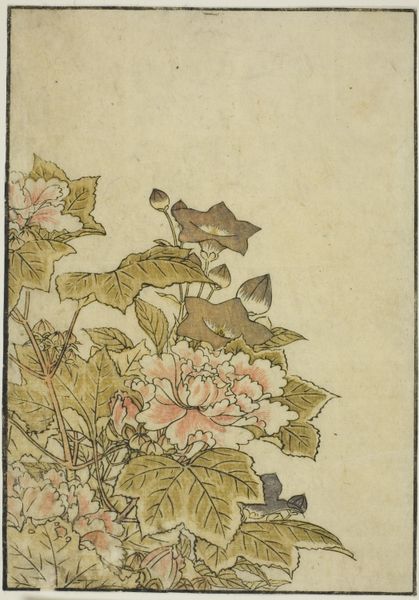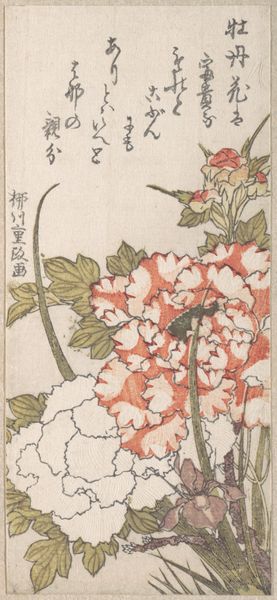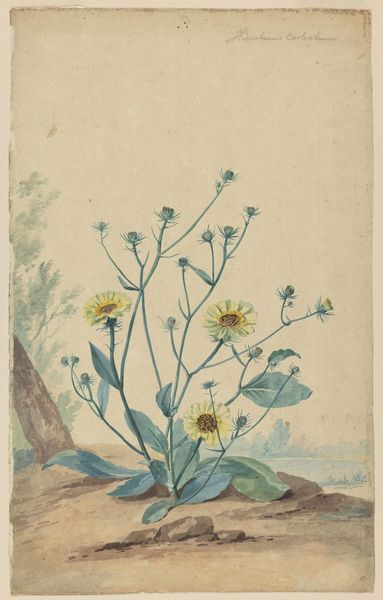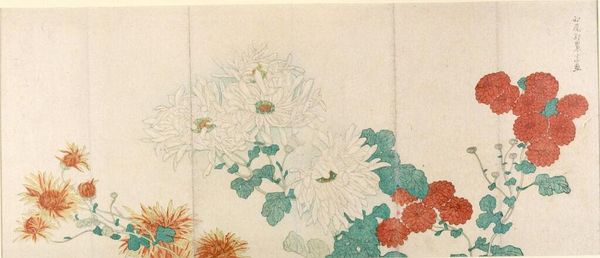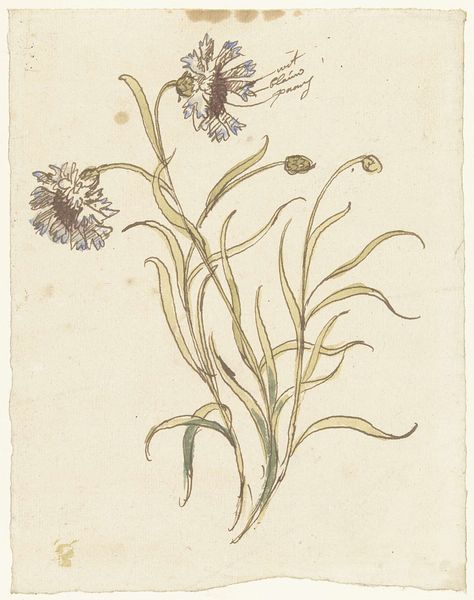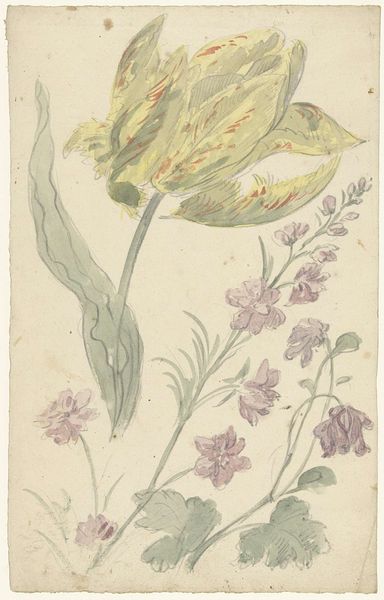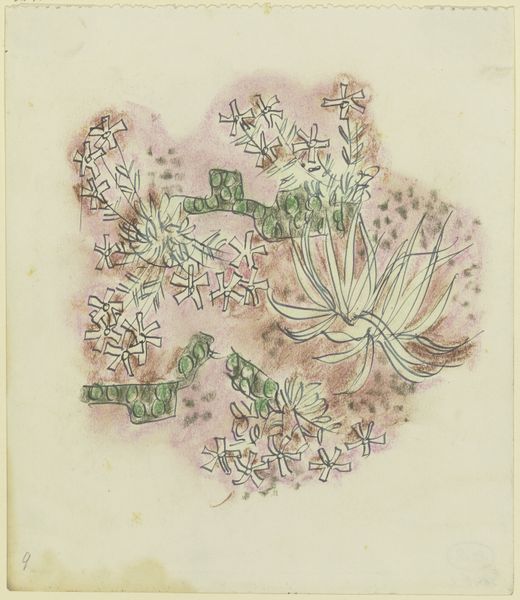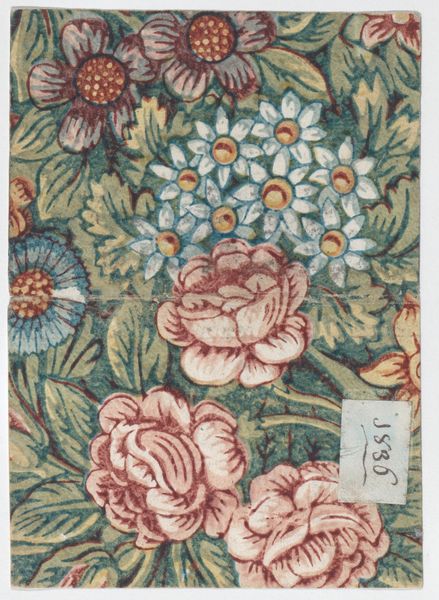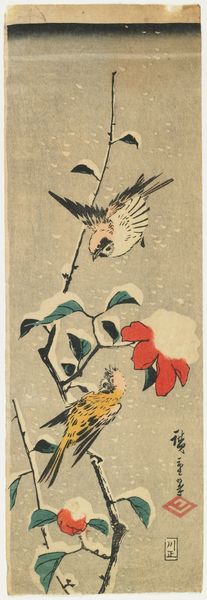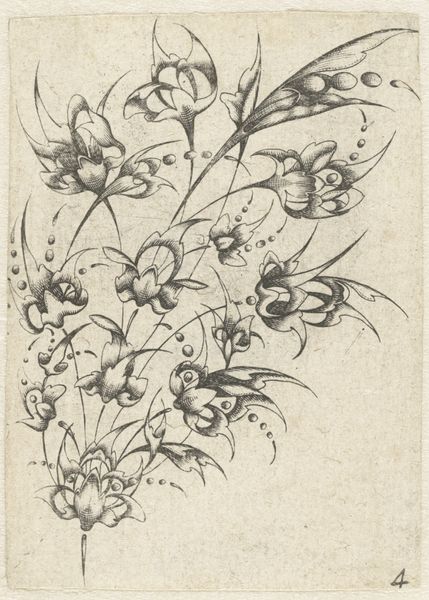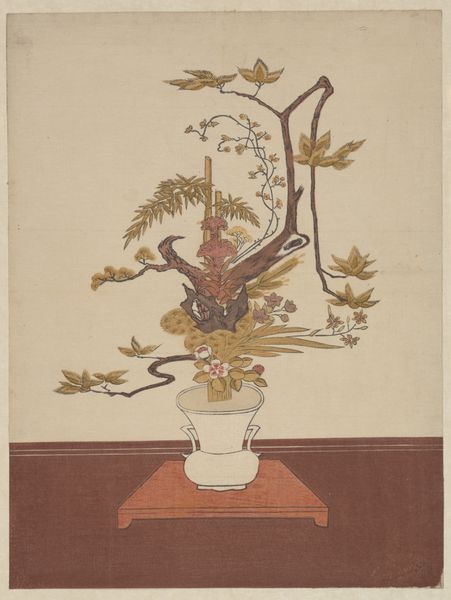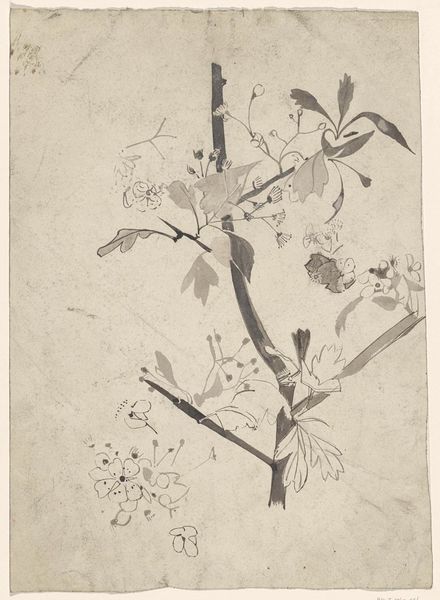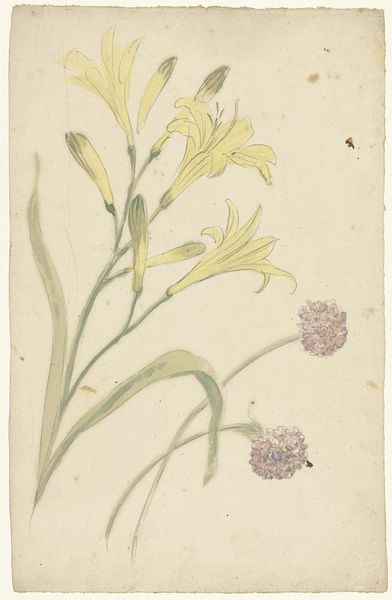
print, linocut
#
art-nouveau
# print
#
linocut
#
linocut print
#
decorative-art
Dimensions: height 227 mm, width 137 mm
Copyright: Rijks Museum: Open Domain
Curator: Julie de Graag, a Dutch artist active between 1887 and 1924, created this lovely linocut print, "Chrysanten," now residing here at the Rijksmuseum. Editor: The colors are so muted, almost faded, giving it a melancholic yet nostalgic feel. I like how the artist made use of linework to capture detail, like each petal of the flowers is distinct. Curator: As a proponent of decorative arts and the Art Nouveau style, de Graag deliberately turned away from the mechanization of industry. She employed the linocut, a form of relief printmaking to capture the intricacies of nature, aligning her work with that of other artists trying to return artistic agency back to the individual at the turn of the century. The flowers become less mimetic, and more of a flattened, stylistic statement. Editor: Interesting to view it from that context; placing it within that moment where you're beginning to feel the anxiety of industry creeping into the domestic sphere. Are these flowers acting as a protest against this encroaching modernization by elevating hand-made arts and focusing on these detailed natural scenes? Curator: Precisely! It's an active choice—positioning her work, and by extension, herself—against the current sociopolitical and economic structure. It raises questions about what role the decorative can play in challenging norms and reasserting feminine artistic skill, perhaps even reflecting women's evolving role at home. Editor: Considering it now, this seemingly simple arrangement takes on a defiant tone. In viewing the linocut method here, I notice a sense of the hand's presence, a pushback against mass production and the sterile uniformity it propagates, by making the flower a hand-hewn thing of beauty. Curator: It’s remarkable how De Graag used this medium, commonly considered "lesser", to evoke that sensibility, imbuing these Chrysanthemums with significance that extends beyond their purely decorative appeal. Editor: That really shifted my perspective; I initially just appreciated its aesthetic, but now I can appreciate what those flowers meant when looking at it in the specific setting of industrialisation and cultural shifts around art making and labor in the early 20th Century.
Comments
No comments
Be the first to comment and join the conversation on the ultimate creative platform.
